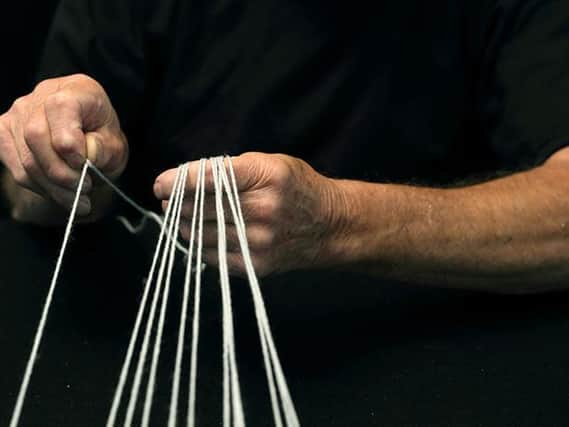New photography exhibition to celebrate Bailiff Bridge’s industrial heritage and community


The exhibition is the culmination of the Intertwining Threads project – led by Dr Lisa Taylor, Reader in Media at Leeds Beckett University, in collaboration with artist Catherine Bertola and a group of former employees of Firth’s Carpets and local village residents. Both Lisa and Catherine are former residents of Bailiff Bridge.
Using a range of activities including interviews and workshops, the project dug into Bailiff Bridge’s local history – through the memories of those who used to work at Firth’s – and the experiences of people who now live in new-build houses built on the sites of the former mill buildings.
Advertisement
Hide AdAdvertisement
Hide AdDr Taylor explained: “The Intertwining Threads project aimed to bring together different strands of the Bailiff Bridge community through the history of Firth’s Carpets. For decades, Firth’s stood at the heart of the village and its community. In 2002 it closed its doors for the final time. After nearly 20 years, most of the former mill buildings have disappeared making space for new homes and establishing new communities.”
Earlier this year, Catherine Bertola brought former employees and local residents together and took photographs of them re-enacting and sharing the way the workers used their hands in the factory.
The photographs taken by Catherine will be on display in the old wood-panelled boardroom of Firth’s, located in Clifton House - the only remaining Firth’s building still standing. The exhibition will be open from Monday 25 to Friday 29 October, from 12pm to 4pm. Entry is free and open to all.
Dr Taylor said: “Everything came together in the workshops. Around 18 ex-workers came to join residents who are relatively new to Bailiff Bridge. What was extraordinary was how Catherine was able to tease out carpet-making hand gestures - just by getting people to talk about the work they did.
Advertisement
Hide AdAdvertisement
Hide Ad"Weavers and winders began to use their hands to describe how they worked and sometimes they referred to the tools they used. The atmosphere was so convivial - it began a conversation about carpet-making and the passing on of those lost skills. It felt as though community was being re-made in the room!
“Around 16 million people in Britain live in de-industrialised towns and villages. Coal and steel - heavy industries - are more commonly talked about. But textiles needs to be remembered and celebrated too! What we can't afford to do is allow the history of the labour, the pride, the community and the beautiful carpets Firth's made to be forgotten. Using the rhythms and practices of skilled worker hands, this exhibition insists we remember.”
Catherine added: “The exhibition developed out a number of conversations and workshops with ex-workers and local residents. People were asked to share stories about their memories of Firth’s, and it was fascinating for me to see how people began using their hands and bodies as they recollected their experiences of working in the factory.
"This inspired the final photographs, which focus on the hands of people from the past and present community of Bailiff Bridge, demonstrating how hands were used to carry out various jobs, particularly the tying of Weaver’s Knots, an essential skill within carpet manufacture.
"The knot is used to securely tie two ends of yarn together, which became symbolic in thinking about the project as uniting this ex-industrial community.”